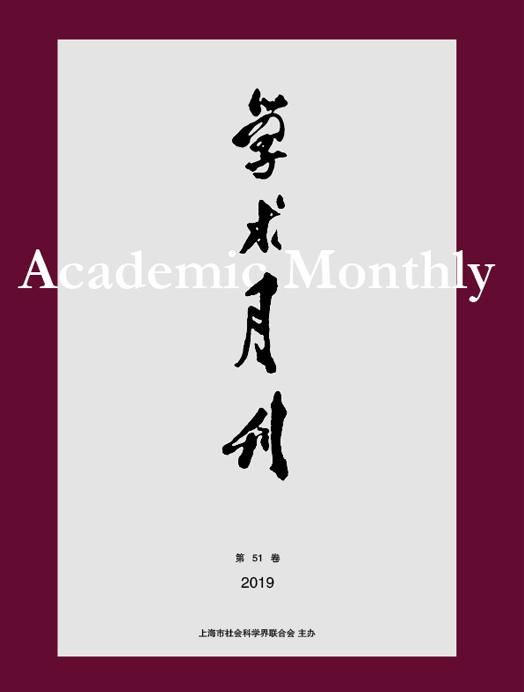Citation:
Weimo LIU. Mathematical and Graphical Reasoning with Shi-graphs in Early China[J]. Academic Monthly, 2022, 54(4): 22-37.

Mathematical and Graphical Reasoning with Shi-graphs in Early China
-
Abstract
In contrast to Western causal thinking, early Chinese thinking is often characterized as associative and thereby criticized as ambiguous and pre-logical. Contra this traditional view, this paper firstly argues that the early Chinese thinking can be clearly grasped in terms of analyzing its underlying logic and structure. In fact, a large number of mathematical and hemerological texts found in recent years provide us two important clues for the central claim of this study, that are numbers and images. Secondly, instead of considering the images in question as artificial signs for practical purposes or symbolic pictures with allegorical meanings, I argue that they are actually various models of natural or scientifically relevant objects (such as the returning cycle of the sun or that of the music tones), yet downscalingly demonstrated into two dimensional images. Normally there are three steps for inventing this kind of pictorial model, i.e., considering particular things as mathematical objects, searching for their periodicity and projecting it as an image, the process of which represents a mathematical and graphical reasoning crucial for the formation of early Chinese associative thought. Thirdly, I argue that the shi-graphs( “式图” ), the most popular tools used for divination in the folk society in early China, are also representations of Chinese mathematical and graphical reasoning, although with simplifications and transformations of the above pictorial models. Besides, shi-graphs extend and expand the domain of correlative things and are important for the fixation of this correlative thinking among ordinary people.
-

-
References
-
Access
-
-
[1]
Shaobin BIAN
. Dignity and Necessity: Wood on Kant’s Ethical Thoughts. Academic Monthly,
2021, 53(6): 31-44.
-
[2]
ZHANG Yifei
. A Critical Analysis of Evoluted American Strategic Thinking and Its Impact on the U.S.Hegemony. Academic Monthly,
2024, 56(3): 84-95.
-
[3]
,
,
. . Academic Monthly,
2016, 48(09): 49-58.
-
[4]
ZHANG Huiyong
. . Academic Monthly,
2018, 50(6): 22-31.
-
[5]
Xiangzhou HE
. The Marginal Model of Public Governance and the Verification of the People-oriented Public Governance Idea. Academic Monthly,
2020, 52(12): 68-78.
-
[6]
Jingkui LI
. IS-LM Model: An Investigation from the History of Economic Thought. Academic Monthly,
2022, 54(8): 45-54.
-
[7]
Da’an HE
. Stages and Conditions of the Enterprise Digital Transformation. Academic Monthly,
2022, 54(4): 38-49.
-
[8]
Huiying FANG
. The Value Orientation and Standardized Construction of the Principle of Modesty in Criminal Law. Academic Monthly,
2022, 54(7): 117-125.
-
[9]
Leiming DONG
, Song ZOU
. Autonomy of Village Community and Internalization of External Resources: A Case Study of A Village in Jiangxi Province. Academic Monthly,
2020, 52(6): 71-83.
-
[10]
Zhiqing DONG
, Hui WANG
. Urbanization, Economic Agglomeration and Heterogeneity of Regional Economic Growth. Academic Monthly,
2019, 51(10): 54-66.
-
[11]
Zhiming HAN
. The Clarity and the Operational Logic of State Governance. Academic Monthly,
2019, 51(9): 82-94.
-
[12]
Baoping REN
. New Logic of Promoting High-quality Development in the New Journey of Chinese Path to Modernization. Academic Monthly,
2023, 55(1): 48-55.
-
[13]
Chunguang WANG
. Rural Non-Employment Income and the Possible Future Picture of Chinese Rural Modernization. Academic Monthly,
2022, 54(12): 128-140.
-
[14]
Wei LIU
. Chinese Modernization and Low-carbon Green Development. Academic Monthly,
2023, 55(1): 39-47.
-
[15]
Xiaoyu LI
. How Do Images “Serve the History”. Academic Monthly,
2022, 54(12): 153-164.
-
[16]
Zhenglong WANG
. The Literary Variation in the Age of Image. Academic Monthly,
2019, 51(10): 132-138.
-
[17]
,
. . Academic Monthly,
2019, 51(10): 5-13.
-
[18]
Siyou GE
. On the Vacillations of Public Justification. Academic Monthly,
2020, 52(7): 14-23.
-
[19]
. . Academic Monthly,
2016, 48(08): 40-51.
-
[20]
Jin DU
. Stories, Images and Law Publicity: Focus on Shengyu Xiangjie issued in Qing Dynasty. Academic Monthly,
2019, 51(3): 109-122.
-
-




 沪公网安备 31010102003103号
沪公网安备 31010102003103号 DownLoad:
DownLoad:





